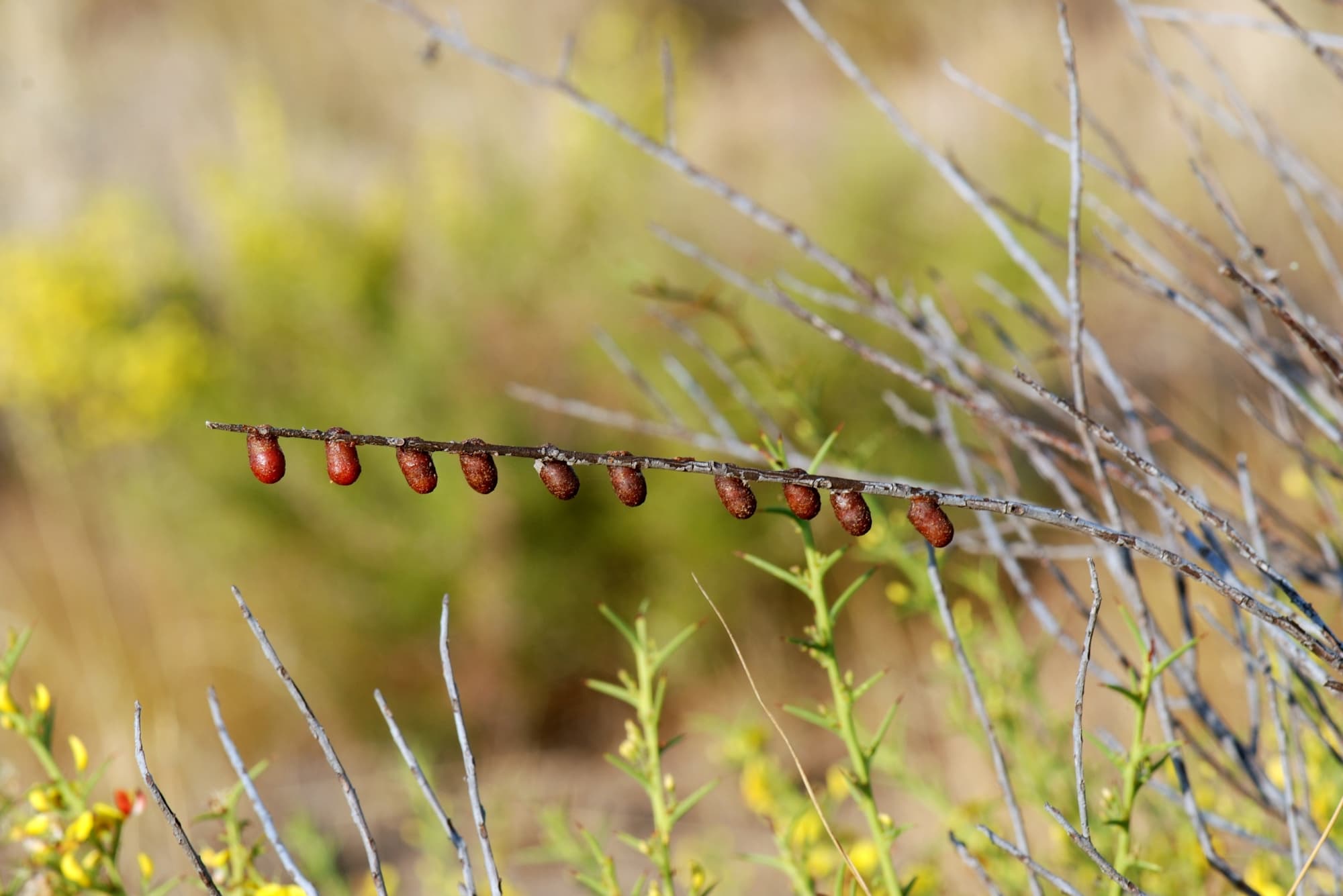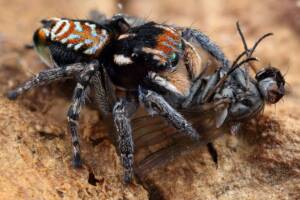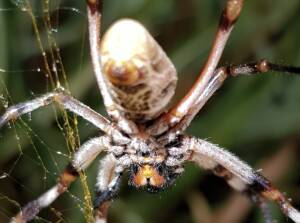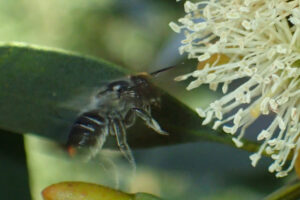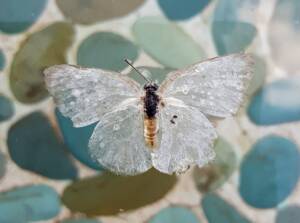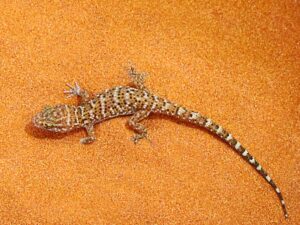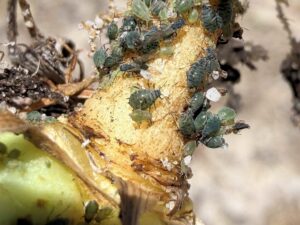BeesBees Anatomy Bee Behaviour Blogging Bees… Bees – image index Bees – Index Lists Unidentified Australian Native Bees Amegilla Bees Apis mellifera Austroplebeia australis Austrothurgus Braunsapis sp Ceylalictus perditellus Colletidae Euryglossinae Exoneura Hyleoides bivulnerata Lasioglossum Lasioglossum (Chilalictus) Lasioglossum (Homalictus) Leioproctus pappus Lipotriches Megachile Meroglossa Resin Bees and Resin Pot Bees Stenotritidae Tetragonula Thyreus Xylocopa
“Resin Bees” and “Resin Pot Bees” is a synonym and refers to a group of bees that use resin to build their nests and to seal the nest entrances.
The Australian Resin Bees are in the genus Megachile (previously classified in the genus Chalicodoma), and are in the family Megachilidae. This group of bees are found Australia-wide.
The Resin Bees common name is derived from the use of resin to build their nests. Their nests are often in narrow holes in timber or dried plant stems, although they are known to nest in narrow crevices in other material such as the mortar between bricks or the vacated mud nest of other bees.
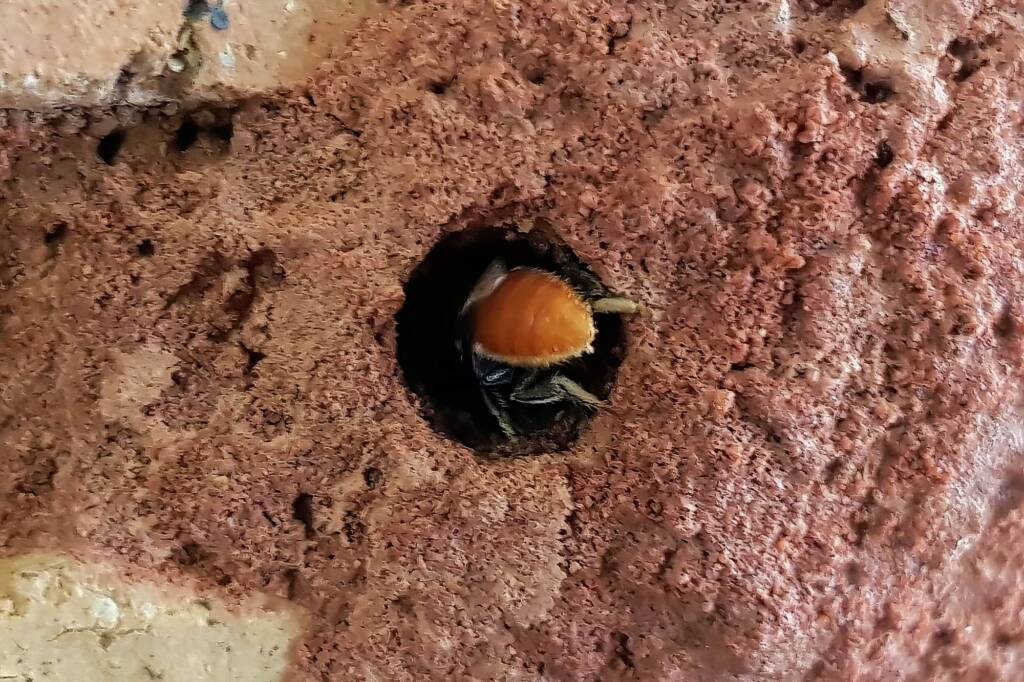
The Resin Pot Bees refer to the group of native bees that create “pot shaped” nests, often seen attached to the stems of shrubs and other woody stemed plants.
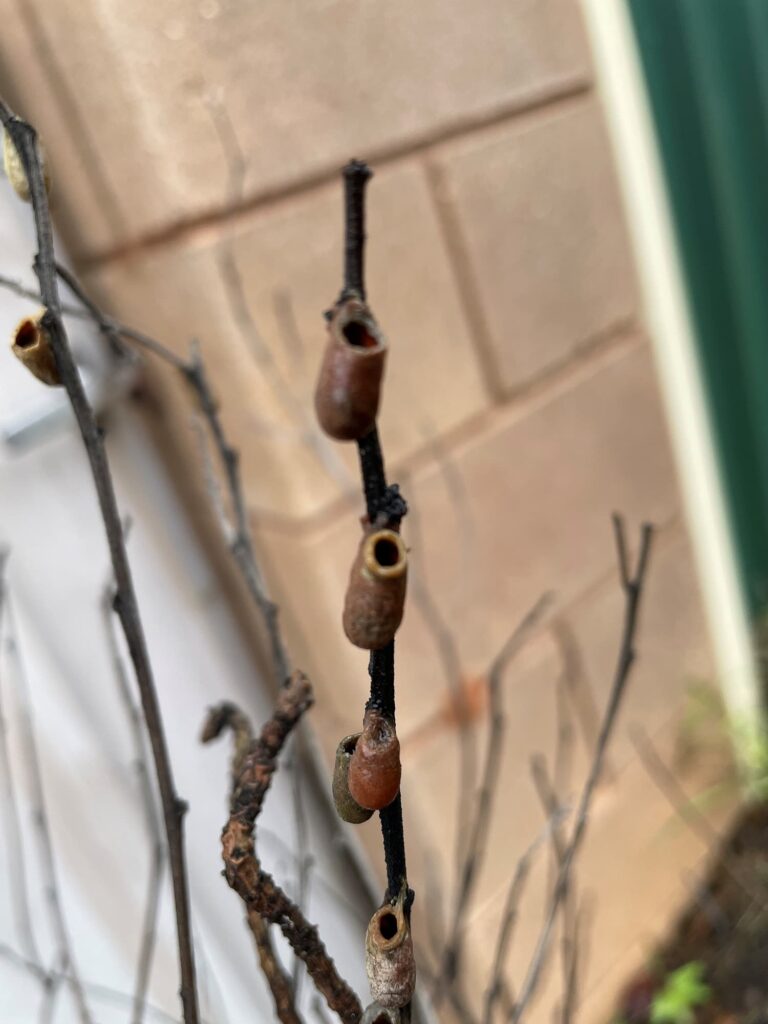


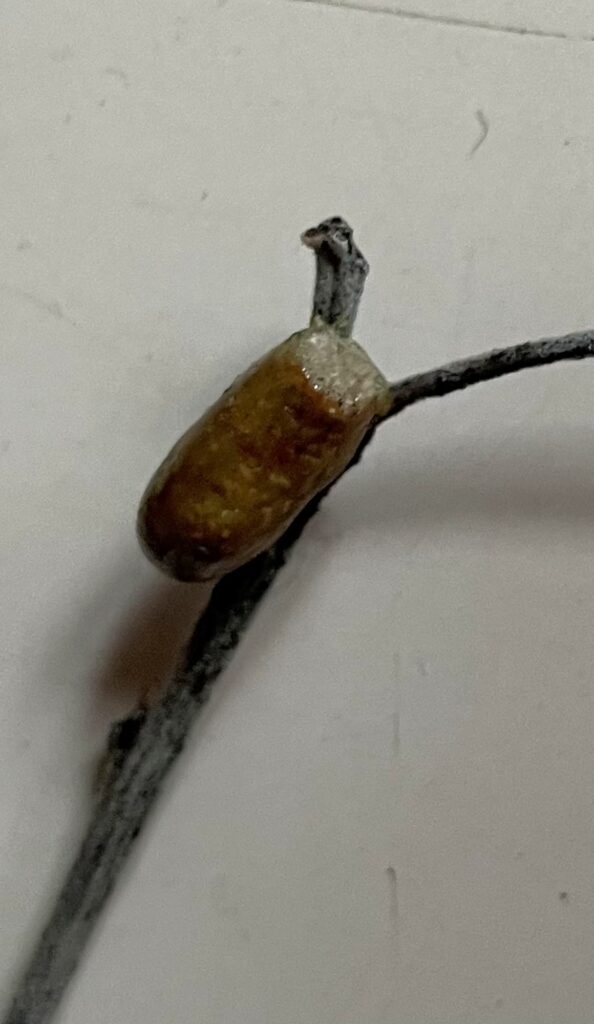
This family of bees range in size from 8 to 14 mm. The Megachilids are solitary, although they sometimes nest in aggregations. They are considered an attractive native bee, with different species being red, orange or black in colouration. The females usually have long, cyclindrical abdomen and uses resin and chewed leaf material in their brood cells.
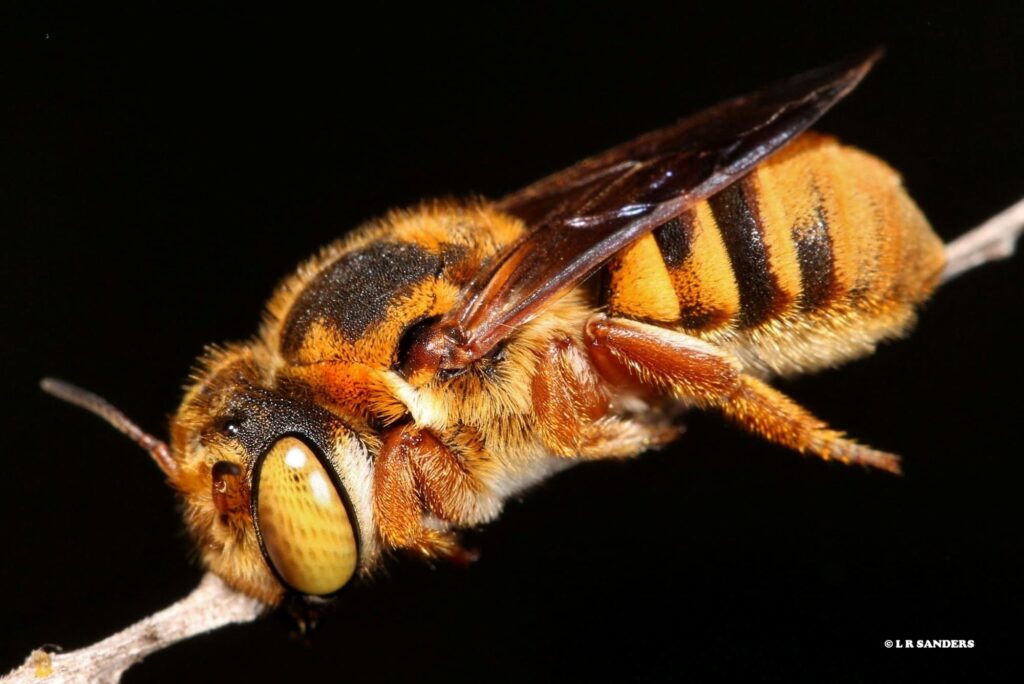
Some common morphological characteristics of the Resin Bees is that they have long tongues and will feed on deep or shallow flowers. They have large jaws that are used for cutting and collecting plant resins and leaves. The female has an abdominal scopa (plural scopae; Latin for “broom”) and may have protruding structures on the clypeus. The clypeus on the bee is the area below the antennae, but above the labrum and the mouth. The female abdomen of this group of bees end in a blunt point, while the males’
abdomen is rounded and curled under. The integument is usually black. The integument (or exoskeleton), is the hard, outer covering of a bee’s body that provide protection and support.
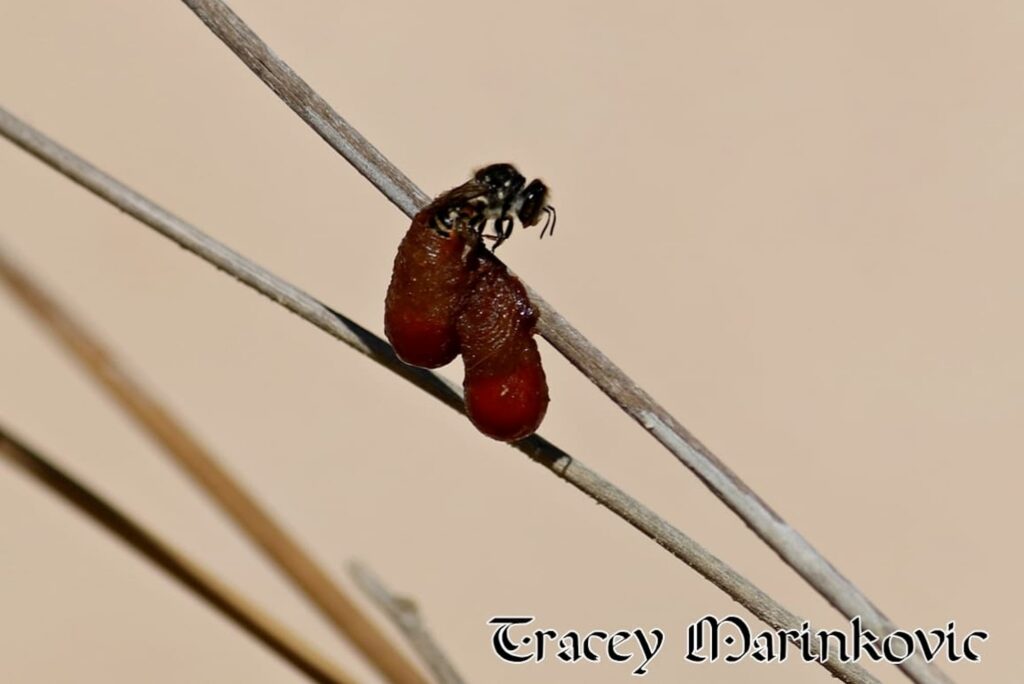
The Austrochile sp (who use resin in the construction of their nests), have been observed visiting flowers of the genus Eucalyptus, including Eucalyptus resinifera (Red Mahogany).
The following male and female Megachile (Austrochile) “resin pot” bee and nests were found at Star Swamp and Lake Claremont (and other locations around Perth WA).
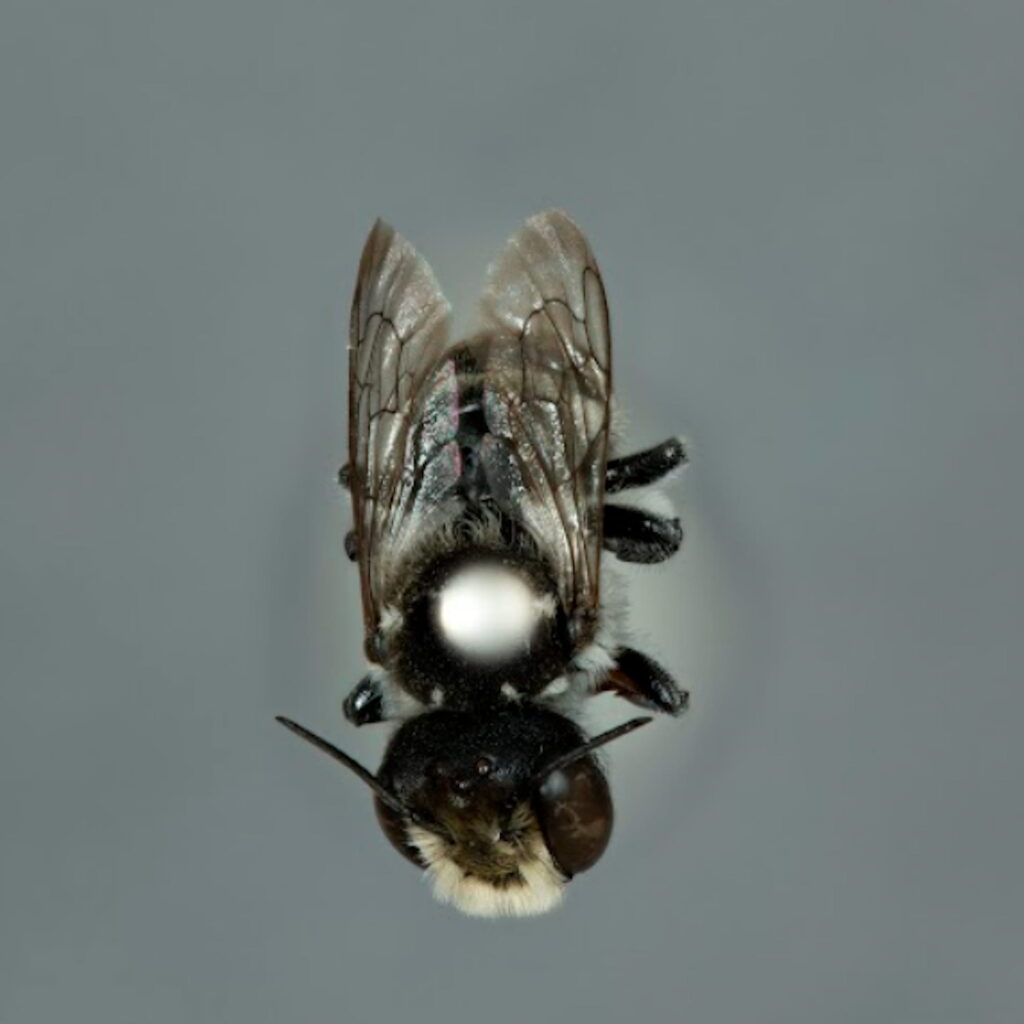
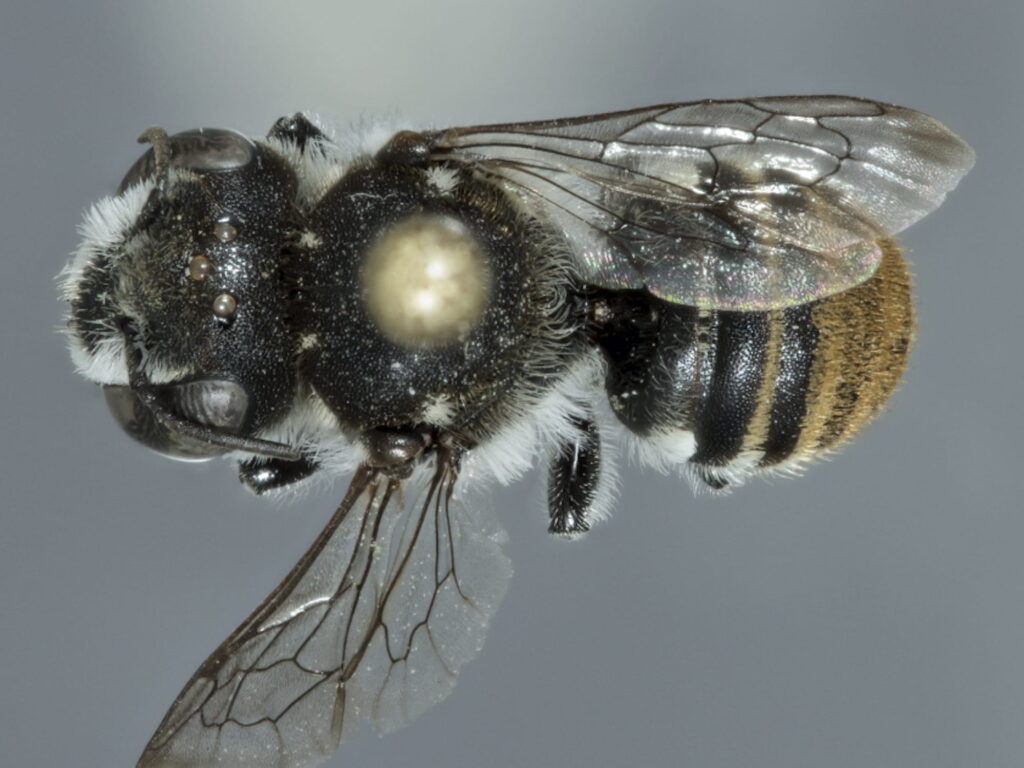
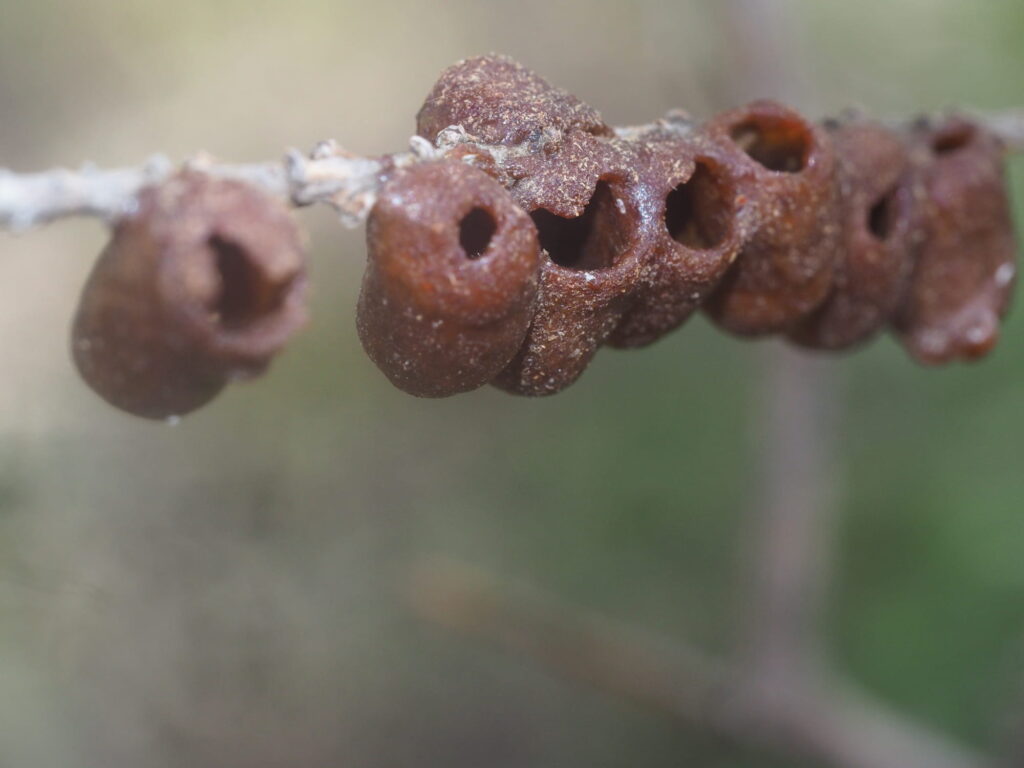
Nesting Pots of the Resin Pot Bees
Following are photographs of the unique cocoon nests of the Resin Pot Bees. These nests were about 12 mm long, containing bee eggs, pollen and nectar and were sitting near the top of a Leptospermopsis erubescens shrub at about 1 m from the ground.
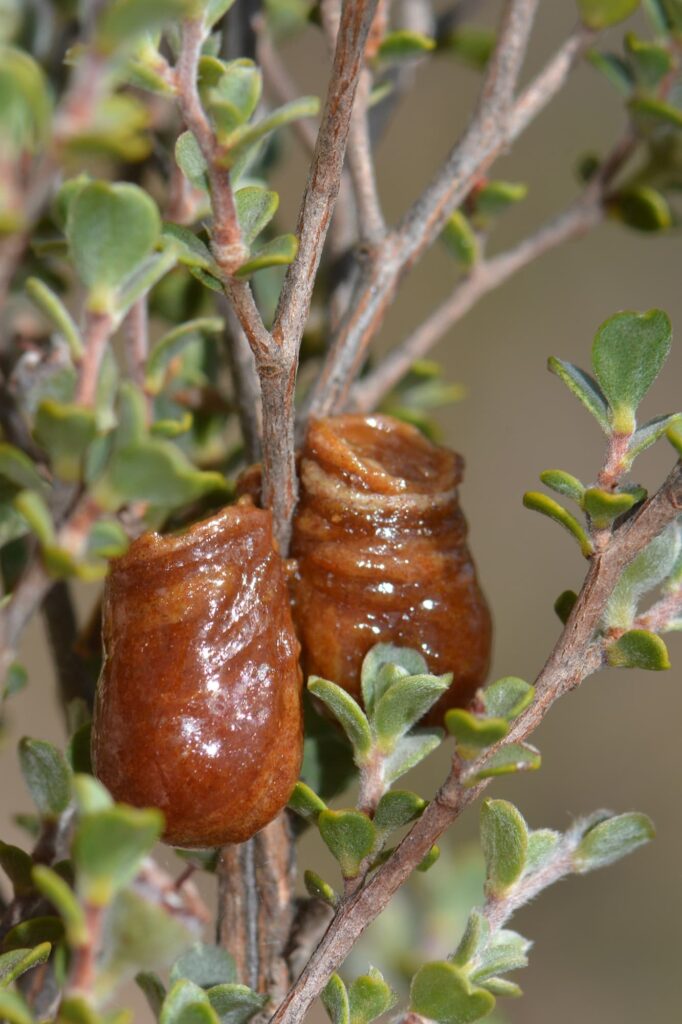
We took photographs, recorded the location and contacted Terry Houston our native bee person from the Western Australian Museum. He asked if we would collect them as rearing the bees from the pots is the only sure way to an identification. We collected them by trimming below the nests and placed them in a jar with netting over the top. We delivered them to Terry who kept them until two male bees emerged on Christmas day 2016.
Source: Jean and Fred Hort
Terry had never seen this bee before and found they were an undescribed bee.6
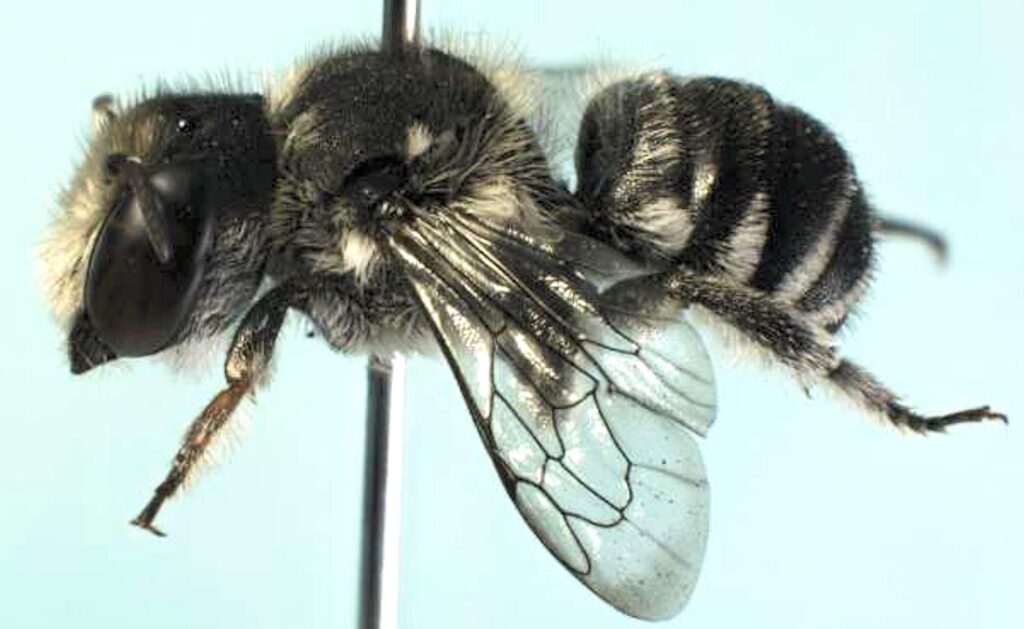
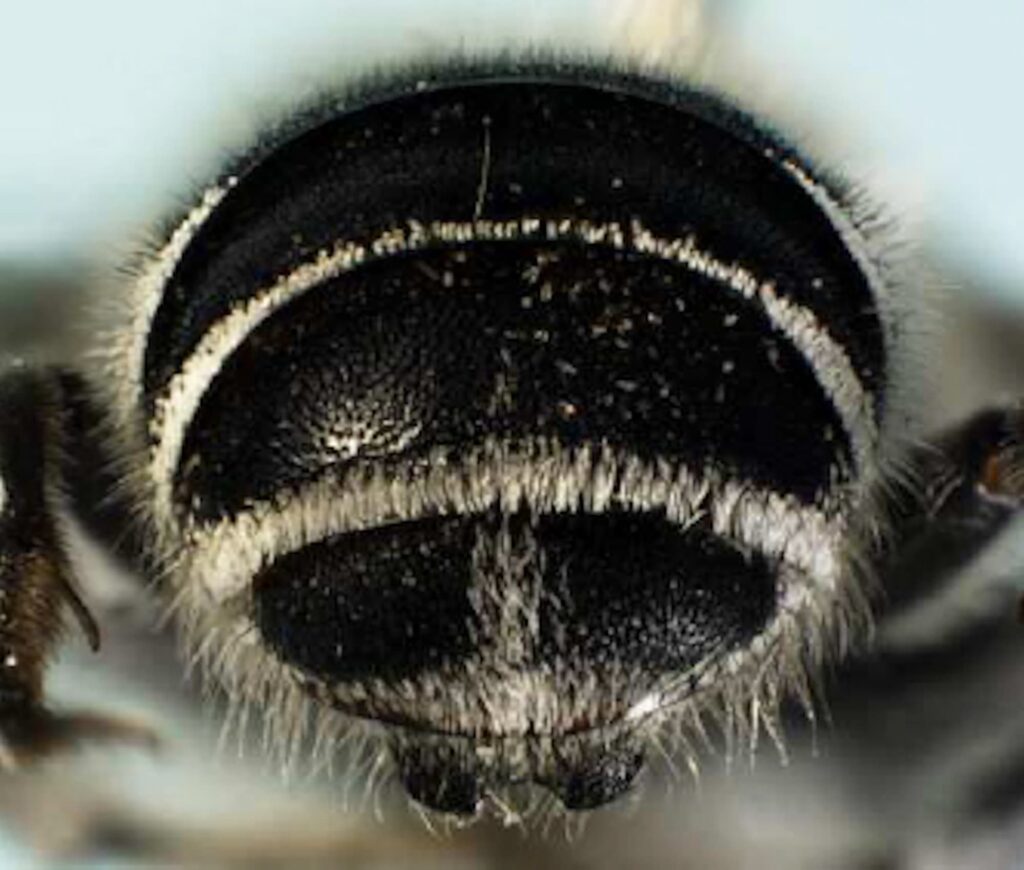
The pots are not easy to find. I have found 3 different ones but more by opportunity / accident than by saying I’m going to find Resin bee nests.
Source: Jean and Fred Hort
The first lot were on a twig.
The pots in Terry Houston’s book were a couple I found in October. Terry kept them in his room in a jar with a flywire lid. One emerged on Christmas Day, the other one the next day. One was a male, the other a female.5
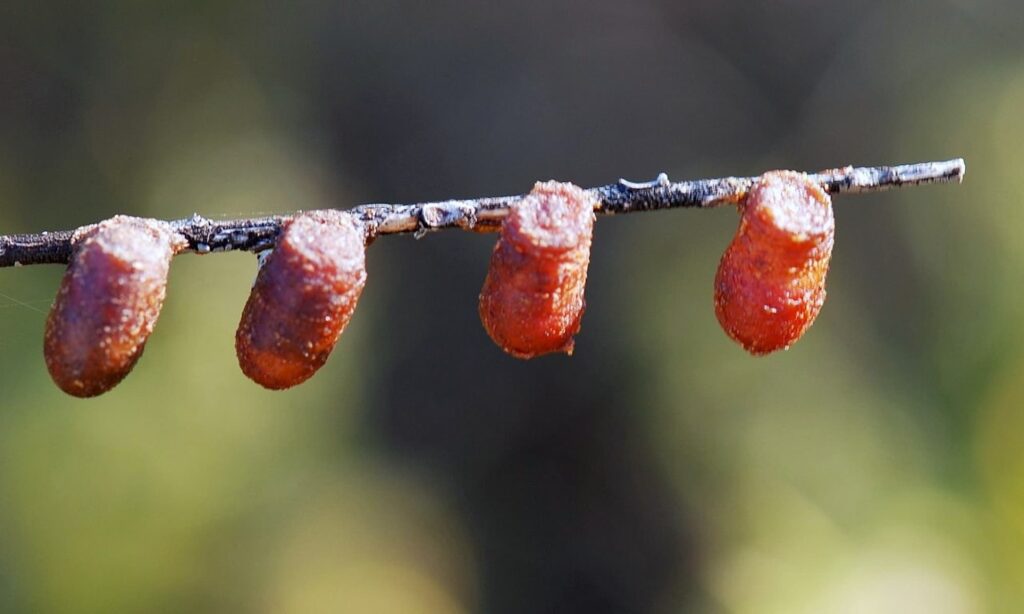
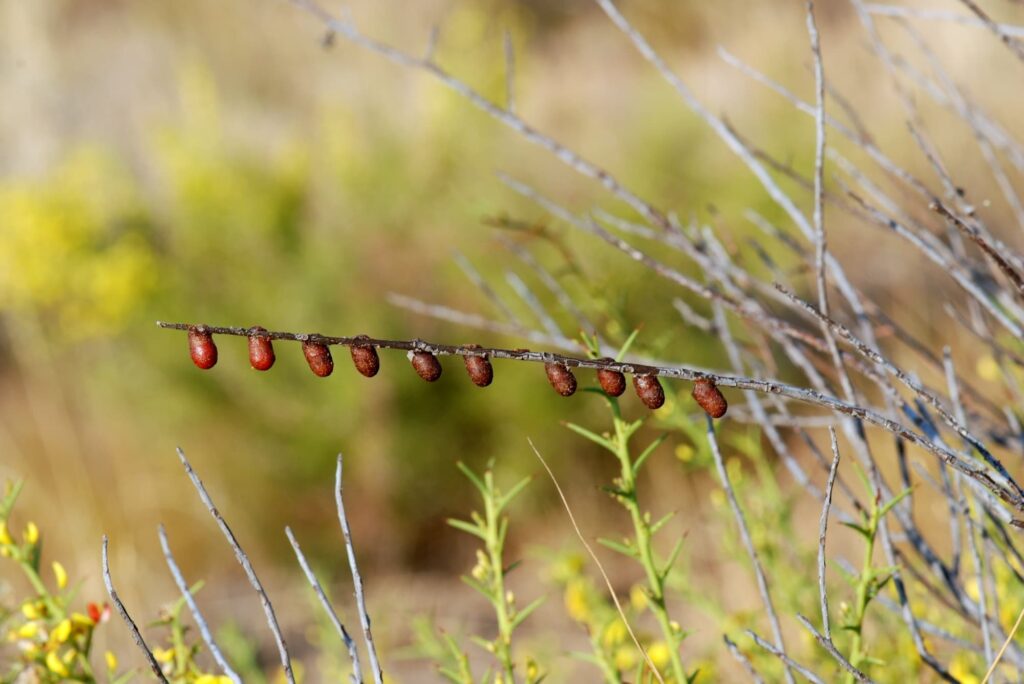
- Scientific classification
- Kingdom: Animalia
- Phylum: Arthropoda
- Subphylum: Hexapoda
- Class: Insecta
- Informal: Pterygotes
- Order: Hymenoptera
- Superfamily: Apoidea
- Informal: Apiformes
- Family: Megachilidae
- Subfamily:
- Lithurginae
- Megachilinae
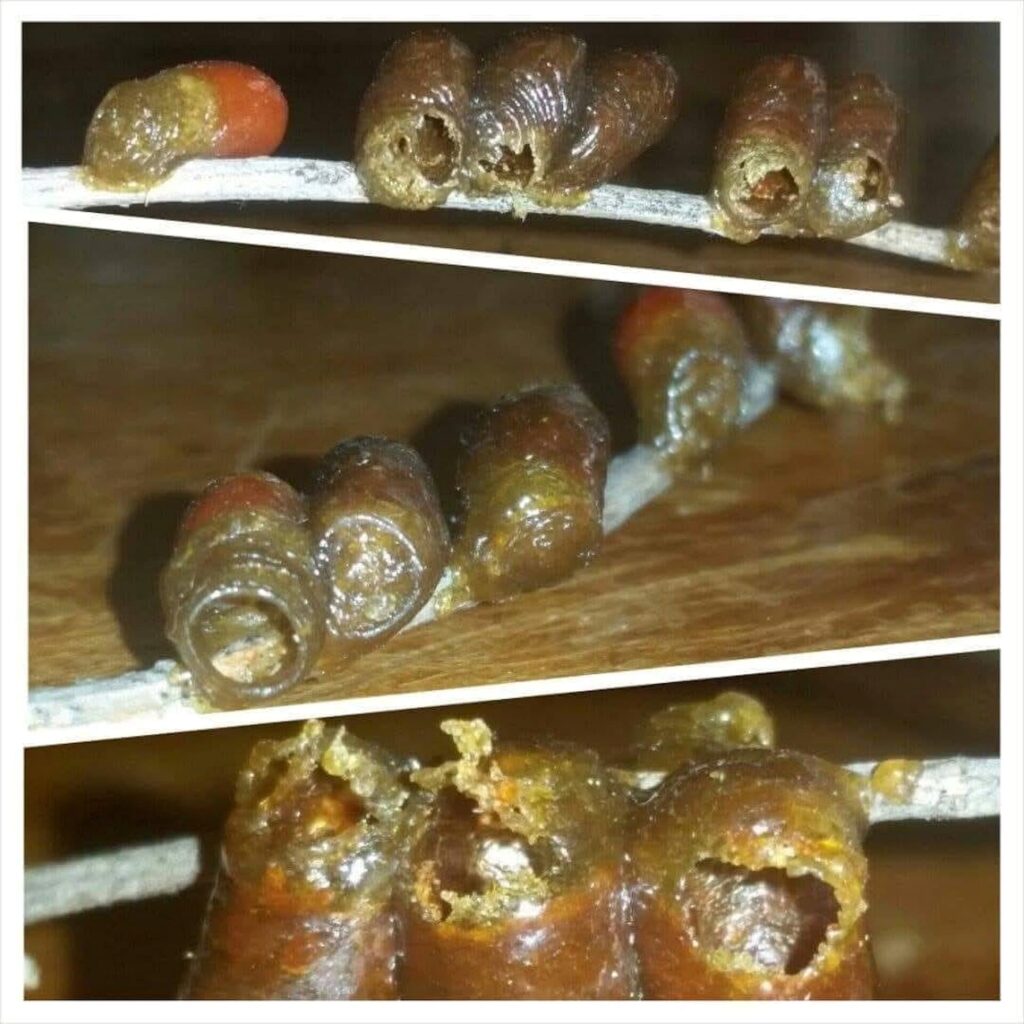
Footnote & References
- Photographs: Cocoon of the Resin Pot Bee, Alice Springs NT © Barbara Gilfedder
- Chalicodoma sp (female Resin Pot Bee), Emerald QLD © Laurence Sanders
- Megachile (Austrochile) nr resinifera Meade Waldo – many thanks for info to Roch Desmier de Chenon, member of The Buzz on Wild Bees, Facebook group https://www.facebook.com/groups/1041684025880609/
- Resin Pot Bee, WA © Tracey Walker Marinkovic
- Photographs WA © Jean and Fred Hort
- Resin bee nests, Flickr, Jean and Fred Hort, https://www.flickr.com/photos/jean_hort/24080982400/
- Megachile (Austrochile) “resin pot” bees and nests, locations around Perth WA © Kit Prendergast
- Find native bee resources and more on Kit Prendergast Patreon The Bee Babette: https://www.patreon.com/c/TheBeeBabette
- The Buzz on Wild Bees, https://www.facebook.com/groups/buzzonwildbees/
- Bee Aware of Your Native Bees (Australia), https://www.facebook.com/groups/beeawareofyournativebees/
- The Bee Hotel ID Guide, Bee Aware of Your Native Bees – A Community Based Project, Written by Megan Halcroft and Michael Batley, A guide to help identify Australian native bees associated with artificial nest substrate, within Greater Western Sydney and Lithgow area. Produced by the Office of Sustainability, University of Western Sydney. https://www.beesbusiness.com.au/articles/Halcroft_and_Batley_The_Bee_Hotel_ID_Guide.pdf
- A Guide to Native Bees of Australia, by Terry Houston, CSIRO Publishing, Western Australia Museum
- Native bees of Western Australia, https://www.facebook.com/groups/479428025586681
- MEGACHILIDAE, Atlas of Living Australia, https://bie.ala.org.au/species/MEGACHILIDAE
BeesBees Anatomy Bee Behaviour Blogging Bees… Bees – image index Bees – Index Lists Unidentified Australian Native Bees Amegilla Bees Apis mellifera Austroplebeia australis Austrothurgus Braunsapis sp Ceylalictus perditellus Colletidae Euryglossinae Exoneura Hyleoides bivulnerata Lasioglossum Lasioglossum (Chilalictus) Lasioglossum (Homalictus) Leioproctus pappus Lipotriches Megachile Meroglossa Resin Bees and Resin Pot Bees Stenotritidae Tetragonula Thyreus Xylocopa

